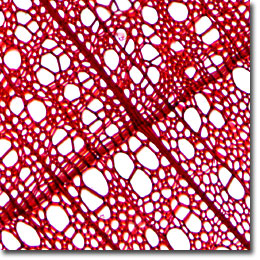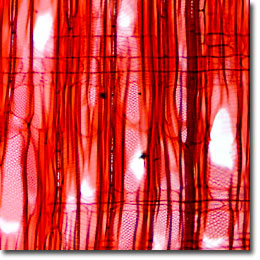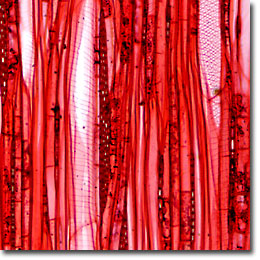The American Basswood
The American Basswood (Tilia americana) is a hardwood tree that is found throughout the eastern half of North America ranging from the northern Canadian Provinces all the way south to Florida. Many of the species can interbreed, and it is very easy to locate natural hybrids of this tree. The sapwood is whitish, but ranges from creamy white to pale brown in color and merges gradually into the darker brown heartwood, which often sports a reddish tinge.

Cross Section

Radial Section

Tangential Section
The American basswood tree has been nicknamed the "Bee Tree" because it is of fundamental importance to the production of a honey that is especially desirable and favorable with a distinctive tang. The tree can grow in just about any soil to heights of 130 feet or more and is propagated by seed, layering, or by cuttings. Basswood is widely used in the manufacture of concealed parts for furniture. Other uses include trunks and valise woodenware, novelties, toys, caskets and coffins, laundry appliances, kitchen cabinets, handles, shade and matte rollers, fixtures, Venetian blind slats, and piano keys. When used in ornamental woodworking, the lumber is first cut from frozen logs, then carefully air seasoned in diffused light to preserve color.
As revealed in the digital images presented above, these stained (iron-alum hematoxylin and safranin) thin sections illustrate a diffuse porous wood exhibiting numerous vessels (having an approximate diameter between 5 and 8 microns), simple perforation plates, and abundant parenchyma. In general, the rays are unstoried and observed in two widths: broad rays ranging between 1 to 6 seriate and narrow rays that are uniseriate. Fiber tracheids are thin walled and medium to very coarse in texture. In general, the cells in the narrow rays are nearly uniform in size but higher than those in the broad rays.